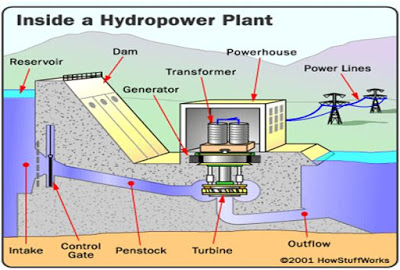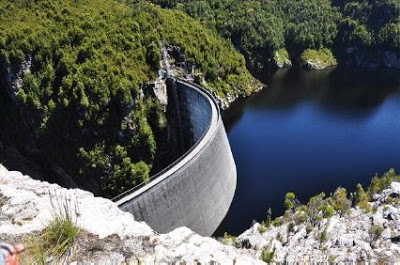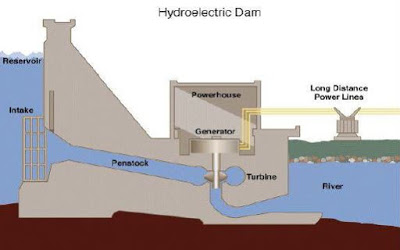Hydropower plants capture the energy of falling water to generate electricity . A turbine converts the kinetic energy of falling water into mechanical energy. Then a generator converts the mechanical energy from the turbine into electrical energy
Site Selection for Hydropower Plants
• Availability of Water: Run-off data for many years available
• Water Storage: for water availability throughout the year
• Head of Water: most economic head, possibility of constructing a dam to get required head
• Geological Investigations: strong foundation, earthquake frequency is less
• Water Pollution: excessive corrosion and damage to metallic structures
• Sedimentation: capacity reduces due to gradual deposition of silt
• Social and Environmental Effects: submergence of areas, effect on biodiversity (e.g.
western ghat), cultural and historic aspects
• Access to Site: for transportation of construction material and heavy machinery new railway
lines or roads may be needed
• Multipurpose: power generation, irrigation, flood control, navigation, recreation; because
initial cost of power plant is high because of civil engineering construction work
Types of Dams
Figure 1: Earth and Rockfill Dam
Figure 2: Arc Dam
Figure 3: Arc Gravity Dam
Classification of Hydropower Plants
According to water flow regulation:
-
Runoff river plants without pondage
-
Runoff river plants with pondage
-
Hydroelectric plants with storage reservoir
According to Load:
-
Base load plants
-
Peak load plants
-
Pumped storage plants
According to head:
-
High head plants (>100m)
-
Medium head plants (30-100 m)
-
Low head plants (<30 m)
Components of a HPP
Figure 4: Schmatic of a Hydropower Plant
The various components of HPP are as follows:
-
Catchment area
-
Reservoir
-
Dam
-
Spillways
-
Conduits
-
Surge tanks
-
Draft tubes
-
Power house
-
Switchyard for power evacuation
Dam
Develops a reservoir to store water
Builds up head for power generation
Spillway
To safeguard the dam when water level in the reservoir rises
Intake
Contains trash racks to filter out debris which may damage the turbine
Forebay
Enlarged body of water just above the intake
Figure 5: Forebay
Headrace is a channel which lead the water to the turbine
Tailrace is a channel which carries water from the turbine
A canal is an open waterway excavated in natural ground following its contour.
A flume is an open channel erected on a surface above ground.
A tunnel is a closed channel excavated through an obstruction.
A pipeline is a closed conduit supported on the ground.
Penstocks are closed conduits for supplying water “under pressure” from head pond to the
turbines.
Hydro Power Plant Auxiliaries
-
Governing oils systems
-
Lubricating oil pumps
-
Coolant oil pumps
-
Drainage pumps
-
Pipes, fans, ventilation
-
Air compressor
-
Cooling oil pumps for transformers
-
Head gates
-
Drain valves
-
Gantry cranes
-
Station batteries
-
Instrumentation system





